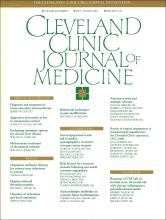ABSTRACT
The major limitation of coronary angioplasty is recurrent stenosis. Patient, clinical, and procedural factors at the time of angioplasty were correlated with the presence or absence of angiographically documented recurrent stenosis or continued patency. Patients with single-vessel, multilesion disease had a lower incidence of recurrence than those with single-vessel, single-lesion disease (22.2% v 37.3%). Patients with multivessel disease had the highest rate of recurrent stenosis (45%). Sex and age did not predict recurrence. Patients with more severe symptoms, patients without prior myocardial infarction (MI), and insulin-dependent diabetic patients were more likely to have recurrent stenosis. Of the lesion variables, a severe stenosis or a low gradient before angioplasty, the absence of an intimal tear after angioplasty, and left anterior descending artery lesions correlated with a higher recurrence rate. Inflation times ≥30 seconds and a greater total number of inflations correlated with a higher recurrence rate. Multivariate analysis showed the following variables to be important predictors of recurrence: Canadian Heart Class, history of myocardial infarction, gradient before angioplasty, artery dilated, number of inflations, severity of stenosis before angioplasty, and insulin-dependent diabetes mellitus.
- Received July 1988.
- Accepted November 1988.
- Copyright © 1989 The Cleveland Clinic Foundation. All Rights Reserved.






